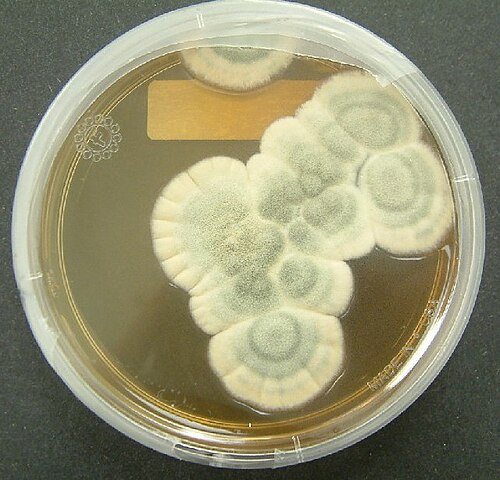Yeastnoun
An often humid, yellowish froth produced by fermenting malt worts, and used to brew beer, leaven bread, and also used in certain medicines.
Yeastnoun
A single-celled fungus of a wide variety of taxonomic families.
Yeastnoun
A true yeast or budding yeast in order Saccharomycetales.
Yeastnoun
Candida, a ubiquitous fungus that can cause various kinds of infections in humans.
Yeastnoun
(figuratively) A frothy foam.
Yeastverb
To ferment.
Yeastverb
(of something prepared with a yeasted dough) To rise.
Yeastverb
To exaggerate
Yeastnoun
The foam, or troth (top yeast), or the sediment (bottom yeast), of beer or other in fermentation, which contains the yeast plant or its spores, and under certain conditions produces fermentation in saccharine or farinaceous substances; a preparation used for raising dough for bread or cakes, and making it light and puffy; barm; ferment.
Yeastnoun
Spume, or foam, of water.
Yeastnoun
A form of fungus which grows as individual rounded cells, rather than in a mycelium, and reproduces by budding; esp. members of the orders Endomycetales and Moniliales. Some fungi may grow both as a yeast or as a mycelium, depending on the conditions of growth.
Yeastnoun
a commercial leavening agent containing yeast cells; used to raise the dough in making bread and for fermenting beer or whiskey
Yeastnoun
any of various single-celled fungi that reproduce asexually by budding or division
Yeastnoun
a microscopic fungus consisting of single oval cells that reproduce by budding, and capable of converting sugar into alcohol and carbon dioxide.
Yeastnoun
a greyish-yellow preparation of the yeast fungus obtained chiefly from fermented beer, used as a fermenting agent, to raise bread dough, and as a food supplement.
Yeastnoun
any unicellular fungus that reproduces vegetatively by budding or fission, including forms such as candida that can cause disease.
Yeast
Yeasts are eukaryotic, single-celled microorganisms classified as members of the fungus kingdom. The first yeast originated hundreds of millions of years ago, and at least 1,500 species are currently recognized.
Funginoun
plural of fungus
Funginoun
(pathology) Spongy, abnormal growth, as granulation tissue formed in a wound
Fungi
A group of thallophytic plant-like organisms of low organization, destitute of chlorophyll, in which reproduction is mainly accomplished by means of asexual spores, which are produced in a great variety of ways, though sexual reproduction is known to occur in certain Phycomycetes, or so-called algal fungi. They include the molds, mildews, rusts, smuts, mushrooms, toadstools, puff balls, and the allies of each. In the two-kingdom classification system they were classed with the plants, but in the modern five-kingdom classification, they are not classed as plants, but are classed in their own separate kingdom fungi, which includes the phyla Zygomycota (including simple fungi such as bread molds), Ascomycota (including the yeasts), Basidiomycota (including the mushrooms, smuts, and rusts), and Deuteromycota (the fungi imperfecti). Some of the forms, such as the yeasts, appear as single-celled microorganisms, but all of the fungi are are eukaryotic, thus distinguishing them from the prokaryotic microorganisms of the kingdon Monera.
Funginoun
the taxonomic kingdom of lower plants
Funginoun
(pun) the one who buys the drinks






































